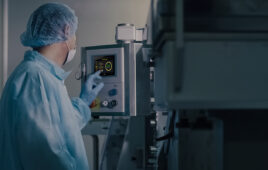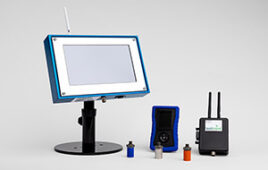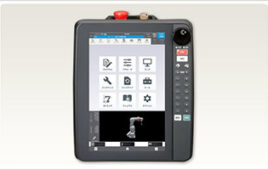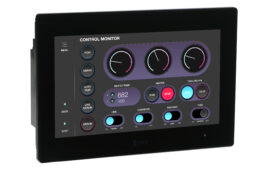Cory Hovanetz, Senior Account Manager, Teguar
The last few months have been challenging for the food and beverage industry. While this sector is facing the usual demands from the regulators and the market, these manufacturers are also trying to fulfill their role as an essential business while COVID-19 courses throughout the world. The industry has to deal with workforces depleted by the virus while striving to bring product to market.
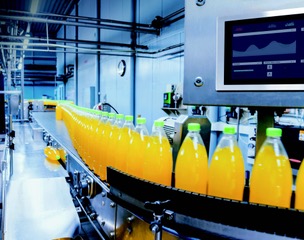
To deal with production, while management is continually looking over its shoulder at the CV-19 threat, more touchscreen computers are finding their way into the systems, equipment, and workstations on the processing plant floor.
Given the appetite for data in this industry to maintain production and the health of workers, touchscreen computers will enable a plant to capture information from connected devices, send it through the system, and make real-time decisions along the processing and packaging line. These devices afford a high level of HMI (human-machine interface) for better management and response of the process.

Inspection at bottling industry.
Controlling the impact of COVID — Food/beverage processing plants have become hot spots for outbreaks of the virus. Therefore, strategies in these facilities will require data for managing workforce density on the work floor, while maintaining productivity goals.
Many workplace routines already involve RFID/barcode scanners upon entrance to the facility, to read employee badges. Other forms of touchless employee check-in now being used include thermal imaging and facial recognition. Recording these data requires workstation-embedded touchscreen computers with high processing power and modularity.

Supply chain management and traceability – Traceability in the food and beverage industry can avoid costly recalls and blows to company reputation. A good portion of the food supply chain exists beyond the plant. Strategically positioned touchscreen computers track the processing path, as product makes its way from the point of origin to the consumer. The data that touchscreen computers capture either on-site or outside of the factory, allows management to increase their supply chain visibility to make adjustments in their process as needs occur.
Processing regulations – The Food Safety Modernization Act and other government mandates have set high standards for food processing. Processors are marshaling touchscreen computers, so management can determine the weak points in their operation and take proactive corrective action.

Production line in a food factory. Workshop with modern equipment. Meat products preparation. Vacuum massage unit.
Predictive maintenance – Unplanned downtime and asset failure have always been an issue in food/beverage processing and a constant threat to production. These concerns are even more so now during COVID, with processing facilities working overtime to meet consumer demand.
With touchscreen computers tracking the performance of the equipment they monitor, these devices enable root cause analysis of maintenance incidents leading to higher uptime, asset utilization, and on-time production. Management can avoid premature service and unnecessary shutdowns. The devices can also enable the usage of advanced technology such as IoT, AI, and blockchain.
The right devices for the food/beverage environment:
Touchscreen design – Touchscreens help save space in food manufacturing environments. Rather than installing waterproof peripherals, such as a keyboard, mouse, and scanner, which can require special cables and waterproof junction boxes, touchscreen computers can incorporate these tools. The touchscreen also allows portable devices, such as rugged tablet PCs, to be smaller and more mobile.
Touchscreen designs can be either resistive or capacitive (PCap). Processes can use resistive touchscreens with thick gloves, PCap touchscreens can be used with thin latex gloves or bare hands. In humid environments where there might be condensation on the screen, resistive is preferred, because light water spay or condensation can interfere with PCap, but generally not with resistive.
Ruggedness — Depending upon the product, food and beverage processors may use touch screen computers in areas with temperature extremes, from low-temperature, chilled operations, to high temperature, cooking or heating processes. Throughout these facilities, operations frequently wash down equipment, so there is exposure to water and even high-pressure streams. Most food manufacturing-specific touchscreen computers are fanless and fully sealed, as well as IP69K and NEMA-4 rated.
Particularly crucial for many food/beverage environments, manufacturers have developed computers with sealed junctions on the back of the device, to protect against moisture. This addition allows the computer to accommodate more cabling options.
Adaptability – For touchscreen computers to take their place along the processing/packing line and interface with IIoT configurations, they need to allow plug-ins from a number of devices, such as printers, scanners, scales, and RFID readers.
In challenging times, such as these, manufacturers may need to quickly shift their operations to meet new consumer demand and heightened safety requirements. Having a computer with the ability to integrate a new peripheral or accommodate an expansion card can help quickly implement new processes and protocols.
Whether it’s a pandemic, food recall, food shortage, or other challenge, touchscreen computers heighten the food and beverage industry’s ability to adapt and respond.
Teguar
teguar.com
Filed Under: Displays • HMIs • operator interfaces • monitors

